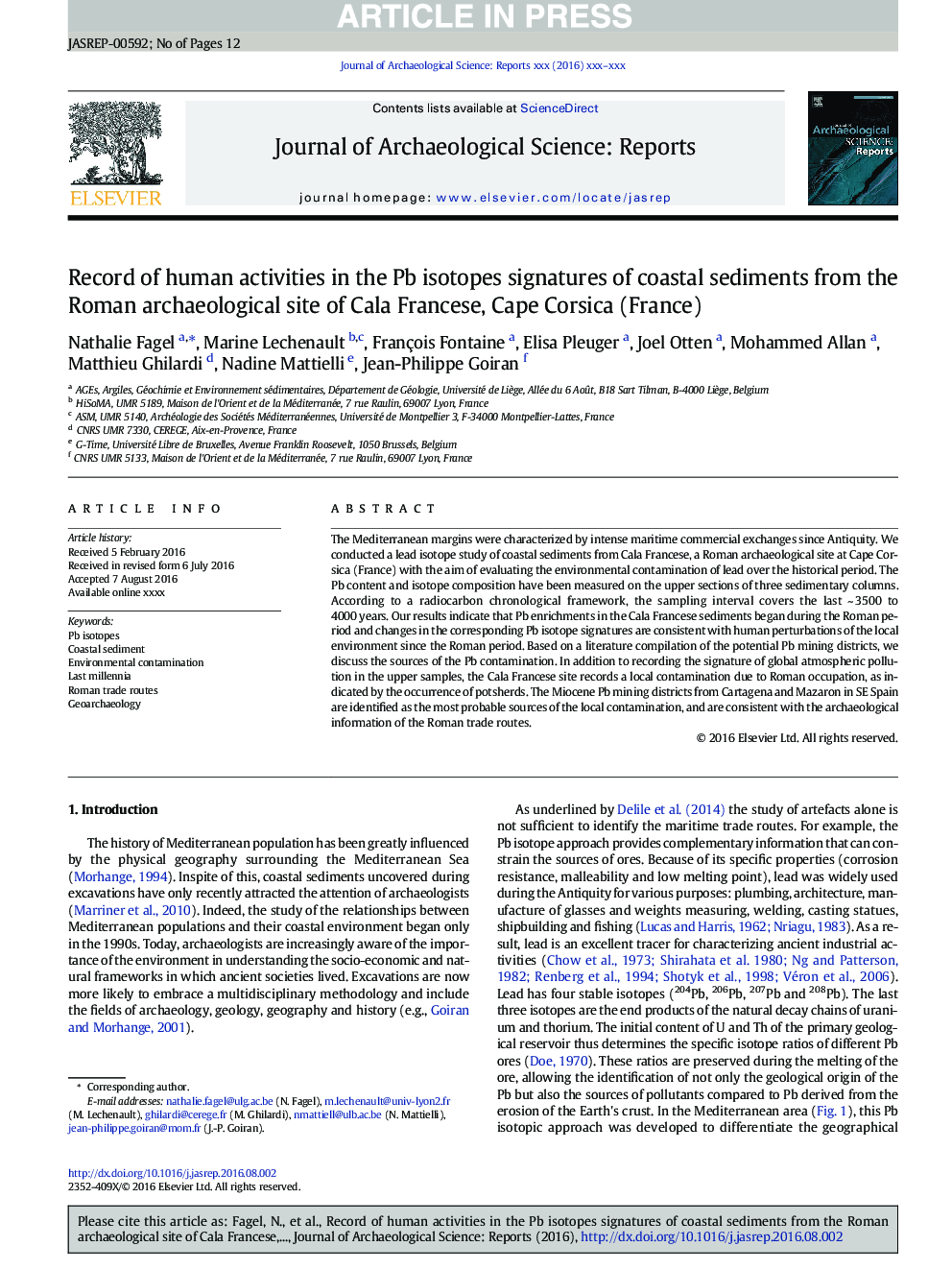| Article ID | Journal | Published Year | Pages | File Type |
|---|---|---|---|---|
| 5112464 | Journal of Archaeological Science: Reports | 2017 | 12 Pages |
Abstract
The Mediterranean margins were characterized by intense maritime commercial exchanges since Antiquity. We conducted a lead isotope study of coastal sediments from Cala Francese, a Roman archaeological site at Cape Corsica (France) with the aim of evaluating the environmental contamination of lead over the historical period. The Pb content and isotope composition have been measured on the upper sections of three sedimentary columns. According to a radiocarbon chronological framework, the sampling interval covers the last ~Â 3500 to 4000Â years. Our results indicate that Pb enrichments in the Cala Francese sediments began during the Roman period and changes in the corresponding Pb isotope signatures are consistent with human perturbations of the local environment since the Roman period. Based on a literature compilation of the potential Pb mining districts, we discuss the sources of the Pb contamination. In addition to recording the signature of global atmospheric pollution in the upper samples, the Cala Francese site records a local contamination due to Roman occupation, as indicated by the occurrence of potsherds. The Miocene Pb mining districts from Cartagena and Mazaron in SE Spain are identified as the most probable sources of the local contamination, and are consistent with the archaeological information of the Roman trade routes.
Related Topics
Social Sciences and Humanities
Arts and Humanities
History
Authors
Nathalie Fagel, Marine Lechenault, François Fontaine, Elisa Pleuger, Joel Otten, Mohammed Allan, Matthieu Ghilardi, Nadine Mattielli, Jean-Philippe Goiran,
